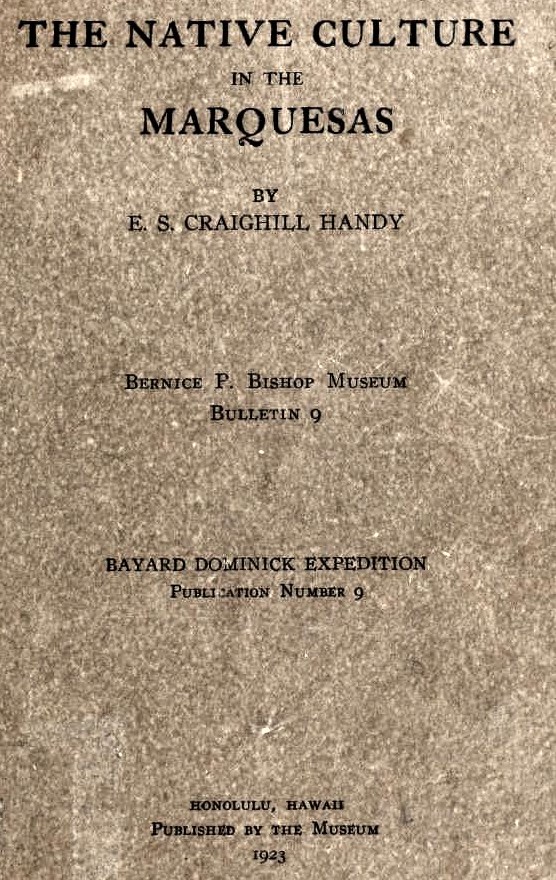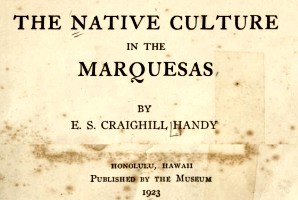
e. s. c. handy : surf riding in marquesas, 1922
| home | catalogue | history | references | appendix |
 |
surfresearch.com.au
e. s. c. handy : surf riding in marquesas, 1922 |
Open
Library
http://openlibrary.org/books/OL6665266M/The_native_culture_in_the_Marquesas
The
following
description of the native culture in the Marquesas Islands
is based on
original research during a nine months' residence,
supplemented by knowledge
derived from printed literary sources and unpublished
manuscripts.
As
ethnologist
of the Bayard Dominick Expedition to the Marquesas, sent by
the Bernice
Pauahi Bishop Museum of Honolulu, I arrived in the Marquesas
September
21, 1920, remaining until June 21, 1921.
The other
members
of the party were Ralph Linton, archaeologist,, and
Willowdean Chatterson
Handy, volunteer associate.
299
WATER SPORTS
Swimming (kati, to swim), practically never indulged in by modern adult natives, is described best for us by Langsdorff (18, pp. 169-170):
"The
dexterity
of these people in swimming is another thing that excited no
small astonishment
in us.
It is not
easy
to conceive . . . how men have accustomed themselves' half
to live in the
water.
They seem to
be able to do just as they please there: they will remain
nearly in the
same place for a long time together, as if they
were
standing
upright, so that the head and shoulders are above the water,
guiding themselves
solely by the feet.
They will
shell
and eat a coconut in the water, or bring a number of things
for barter
tied together at the end of a stick, which they hold up high
above the
water, to keep them from being wetted.
I have seen
them
swim with little children on their shoulders, or throw
themselves from
steep high rocks into the sea; and they would much rather
swim over a creek
than go a step around to get to
Page 300
the other
side.
Some of them
would swim about the ship for the greatest part of the day,
without ever
appearing tired.
Mufau . . .
has
of his own accord run up the main-mast many times together,
and thrown
himself from it into the sea, to the great
astonishment
of the spectators.
...
It was
impossible
to see, without equal shuddering and astonishment, how he
would spring
from such a height, and balance himself in the air for some
seconds with
his feet drawn up against his body, so as to keep his
head up: from
the force of the fall, and the great weight of his body, he
came with so
violent a plunge into the water, that several seconds
elapsed before he
appeared
again
upon its surface."
Surf riding
(hoko)
was a sport for men, women, and children, where there were
beaches that
made it possible.
Surf riders
never
stood, erect as in Hawaii.
The
surfboard
was called papa a'a tai.
Dordillon
gives
pakoao
as a term used for an amusement participated in by two
people, one being
borne inshore on the crest of a breaker while another
person, coming from
the shore, passed under him.
Page 356
8. Dordillon, I. R., Grammaire et dictionaire de la langue des lies Marquises, Paris, 1904.
9. Dordillon, I. R., Manuscript in possession of the Catholic Mission in the Marquesas'.
18. Langsdorff, G. H. von, Voyages and travels in various parts of the world during the years 1803, 1804, 1805, 1806, and 1807, London, 1813.
 |

Handy,
E. S. Craighill:
Open
Library
|

| home | catalogue | history | references | appendix |